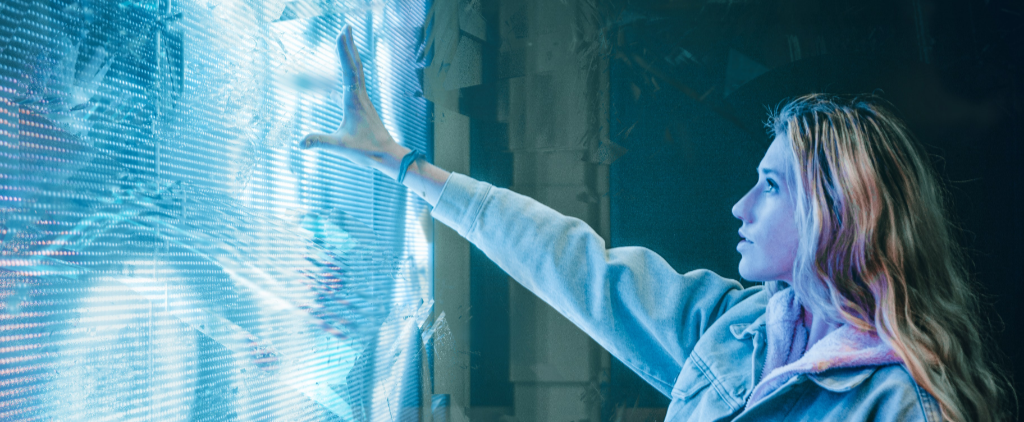Reality capture, 3D visualization, digital twin and laser scanning technologies are becoming the new language for understanding the world around us. By accurately capturing real-world conditions, and improving data processing, reality capture has come a long way.
What’s on the horizon for 2022? Keep a lookout for these 3D technology trends this year, and explore more by attending Geo Week next month!
1. Better interoperability and more connections
With the foundation of the Digital Twin Consortium, as well as other interoperability and standards efforts, a new era of compatible 3D formats may be on the way in 2022.
As the 3D modeling and 3D scanning industry has grown, so has a rumble of discontent with staying within certain proprietary programs. Why should all data be processed only in onboard software? Users are increasingly demanding that they are able to take their 3D data and combine it with other sources, and they want to do this more easily and more quickly than they are currently able to.
Earlier this year, NVIDIA launched Omniverse, a platform for 3D modeling, development and simulation. Based on the Universal Scene Description (USD) format pioneered by Pixar, the platform may also streamline the production of digital copies of production facilities as well as digital twins of existing structures.
Whether or not USD becomes the format that allows 3D programs to seamlessly integrate remains to be seen, but we're definitely seeing a push towards easier ways of moving files between platforms coming.
2. Drones for 3D scanning
Have you scanned with a UAV lately? Things have changed. As sensors miniaturize and platforms expand to meet the needs of more specific projects, 3D scanning and photogrammetry from drones are hitting their stride.
There are a few factors at play in the increase in use for UAVs for 3D scanning and reality capture. First - they are programmable by nature. That means that if you need to capture the same path every day, you don't have to rely on a human to make those scans line up from day to day - they are repeated on their own. Second - UAVs can go places that people can't, or where it is too dangerous. Using SLAM to navigate, some UAS can even be used underground, in urban environments, or anywhere they find themselves without GPS.
3. Integrating scans from many sensors
We went from looking for a one-size-scans-all tool to a breakout into different niches. From portable mobile mapping platforms to flying SLAM scanners, to traditional laser scanners, there are now many tools in the toolbox for 3D scanning and reality capture.
What does that mean for the 3D scanning industry? Things that were either unreachable or impractical to scan are now more in reach. Filling in this middle ground can provide a key level of detail that is not currently available, and bridging the gap between what can be captured on the ground and by aircraft with high-powered lidar, these new formats will help to improve the accuracy and reach of 3D reality capture.
4. Augmented Reality gets its chance to shine
Augmented reality is on the way to being a valuable tool for getting everyone on a project on the same page, and use cases are only beginning to be explored.
While the idea of putting some kind of awkward headset on may feel like the far-distant future, augmented reality has the benefit of being able to be used on sometimes less obtrusive devices, and even via mobile devices or tablets.
But what is the ROI augmented reality? By overlaying important information onto the real world in 3D, and being able to experience information in situ, for example at a construction site, everyone gets better information. It can also be used to lay the plans or locations for pipes or other components onto construction sites - helping to ensure clashes don't happen.
It can also be leveraged for training or direct support of anyone in the field. Instructions can tell an employee exactly which lever to pull or screw to tighten in a work order, or can demonstrate a procedure in 3D before they perform it themselves.
After a few false starts, we are seeing that the combination of available tech and available applications are at a point that could drive a big boom in professional-grade augmented reality in 2022.
5. Getting real in the metaverse
Metaverse may be one of the most hyped words of late 2021, but there’s more to it than just a rebranding from a major social media company. Parts of the metaverse are already in place, and we’re going to see more and more uses of it in 2022 and beyond.
For the 3D world, "the metaverse" can be viewed as simply a giant virtual world where 3D work of all kinds can happen. Will we see digital twins hosted in the metaverse? We already are, to a degree. What about complete copies of real-world environments? There are already city-scale digital twins, so why not connect them in one giant environment?
To be sure, 2022 will be the peak of the "hype" phase about the metaverse, but underlying that are some realities that can transform how we work in 3D in the future.
If you’re interested in learning more about these advances at Geo Week 2022, use the link below to register or see more of the 3D-related conference sessions here.
Register Now Learn More






